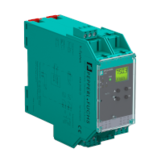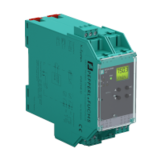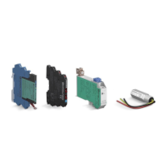풍력 발전 - 윈드 터빈용 낙뢰 방지
낙뢰 보호
풍력은 태양 에너지의 한 형태입니다. 태양이 대기를 고르지 않게 가열하고 지표면이 고르지 않다는 점 그리고 지구가 회전한다는 점 때문에 바람이 일어납니다. 지구의 지형, 수역 그리고 식물이 바람의 패턴을 바꿉니다. 우리는 이 바람의 흐름을 이용하여 전기를 만들어 냅니다.
풍력 에너지나 풍력이라는 용어는 바람을 이용하여 기계력이나 전기를 생성하는 과정을 가리킵니다. 윈드 터빈은 바람에 든 운동 에너지를 기계력으로 변환시킵니다. 이 기계력을 (곡물 분쇄나 물 퍼올리기 등) 특정 작업에 쓸 수 있고 또는 발전기를 써서 이 기계력을 전기로 바꿀 수 있습니다.
그렇다면 윈드 터빈은 어떻게 전기를 만드는 것일까? 쉽게 말해서 윈드 터빈은 팬과 반대 방식으로 작동합니다. 팬처럼 전기를 이용하여 바람을 만들어내는 대신에 윈드 터빈은 바람을 이용하여 전기를 만들어냅니다. 바람은 날을 돌리고 다시 날은 샤프트를 회전시킵니다. 이 샤프트는 발전기에 연결되어 전기를 만들어 냅니다.
대다수 윈드 터빈은 높이가 60-150미터이므로 낙뢰와 전력 서지에 극히 취약합니다. IEC 61400-24(VDE 0127 part 24)는 낙뢰 보호 개념 설계의 토대입니다.
Pepperl+Fuchs는 윈드 터빈과 같은 산업 장비를 낙뢰 위험에서 보호하는 기능을 지닌 제품군을 완비하고 있습니다. 서지 보호, 낙뢰 보호, 절연 및 안전 접지 기능을 제공하는 제품이 있습니다.

Frequency converters from Pepperl+Fuchs, in combination with inductive sensors, enable reliable detection of the rotational speed. This ensures that the speed of the generator does not exceed certain limits.

Pepperl+Fuchs signal converters transmit analog signals to the controller via galvanic isolation. In wind turbines, for example, temperature converters record the values from temperature sensors and transmit them safely. This makes it possible to monitor that oils or oil films on the drive shaft of the generator do not become too hot.

Transmitter power supplies from Pepperl+Fuchs are used in wind turbines for pressure measurement. They transmit signals from pressure transducers to monitor the oil pressure of the generator shaft.

Wind turbines are up to 200 meters high and therefore very susceptible to lightning. Pepperl+Fuchs offers a complete product portfolio designed for surge protection: The modules reliably discharge surges via grounding, therefore protecting people and equipment. Suitable devices are available for signal and supply lines as well as for fieldbus infrastructure.








 +82 2 34819494
+82 2 34819494